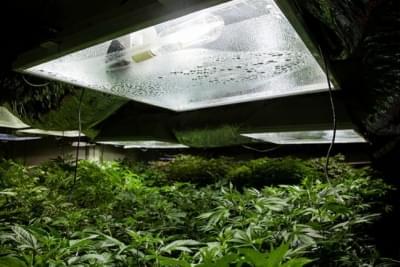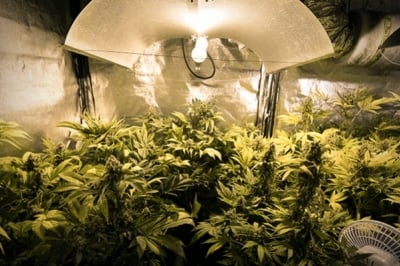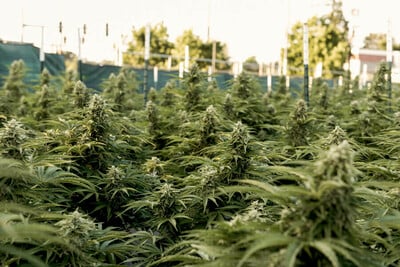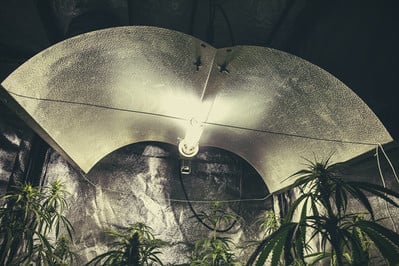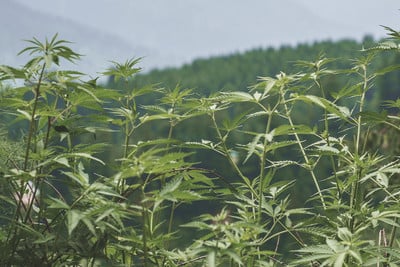.

Photosynthesis, The Process That Makes Cannabis Grow
Photosynthesis is so important to cannabis cultivation. Sinsemilla simply cannot survive without the process. In this blog, we break down the role photosynthesis plays throughout the cannabis life cycle. Whether you grow marijuana indoors or outdoors, you need to check this out.
Contents:
WHAT IS PHOTOSYNTHESIS?
Photosynthesis is how algae, cyanobacteria, and plants convert light into chemical energy. There are actually two kinds of photosynthesis: oxygenic and anoxygenic photosynthesis. Since the latter does not produce oxygen and is mostly limited to bacteria, we’ll focus on oxygenic photosynthesis for the duration of this article.
During oxygenic photosynthesis, the cannabis plant absorbs carbon dioxide and light. These inputs are processed by plants like a biological factory into energy or carbohydrates for the plant to grow, releasing oxygen as a by-product.
Cannabis plants, like other plants, contain chlorophyll; it’s what gives them their green colour. More importantly, the pigmentation is the key to how cannabis plants use their leaves like solar panels. Chlorophyll traps blue and red-spectrum light.
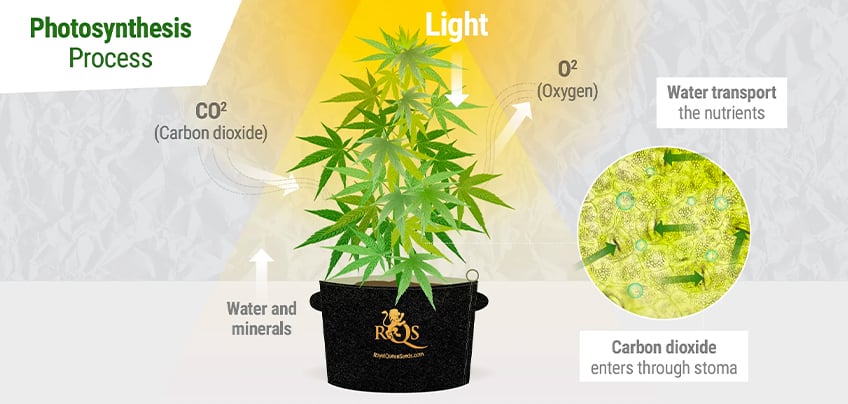

WHAT DO PAR AND PPFD MEAN?
Photosynthetically Active Radiation, or PAR, is a measure for the available light that a plant can actually make use of. Visible light is the spectral bracket 400–700nm. PPFD or Photosynthetic Photon Flux Density readings in micromoles per second (μmol/s) quantify the photons falling on the plant. OK, that’s enough science. The key point is that PAR and PPFD are more accurate measurements of the usable wavelengths and spectrums of light. Most LED lighting systems are marketed based on PAR and PPFD data.
WHAT IS A LUMEN?
In contrast to LED systems, most HID grow lamps, whether MH or HPS, are sold on brightness. Lumens are a measure of how bright a lamp is. It’s not really specific enough to tell you everything you need to know, but it helps when choosing between the specialist horticulture agro-lamps available these days. Unfortunately, cannabis plants can’t photosynthesise as efficiently with old-school yellow lamps as with full-spectrum LED. This is why a 300–400W LED is comparable to a 600W HPS.

HOW MANY HOURS OF LIGHT PER DAY?
The duration of the light cycle is another huge factor to consider. Day length governs plant development and dictates when and how much marijuana a grower will harvest. It’s not just the quality of the light that matters; Mary Jane needs a consistent amount of time to sunbathe every day to reach her full potential. Interruptions to the light cycle will stress photoperiod cannabis plants.
VEGETATIVE GROWTH
Photoperiod cannabis strains can stay in vegetative growth indefinitely, so long as they receive 15+ hours per day of light. Indoor growers favour either an 18-6 or continuous 24-hour light period. Whiter lights to mimic the springtime sunshine, which emits blue-spectrum light, are preferred. Most growers use MH lamps, cool white CFL bulbs, or full-spectrum LED.

FLOWERING
The 12-12 light schedule has become the standard operating procedure for flowering cannabis indoors. Reduction of daylight hours triggers the transition to bloom in cannabis. Outdoors, this is a slower, more gradual process as the days naturally grow shorter after the summer solstice. Now, the red spectrum is the light marijuana needs most to produce bud. Yellow/orange HPS lamps are the old-school substitute for the autumn sunlight. Full-spectrum LED growers need only adjust their timer.
WHAT ARE THE OPTIMAL CONDITIONS FOR PHOTOSYNTHESIS?
Perhaps the best study of cannabis and photosynthesis is the 2008 research study[1] by the University of Mississippi. “Photosynthetic response of Cannabis sativa L. to variations in photosynthetic photon flux densities, temperature and CO₂ conditions” is quite a mouthful, but this is juicy reading material for the ordinary decent home grower.
This study focussed on the indoor performance of 20 four-month-old clones from a single high-yielding Mexican mother plant. By exposing plants to a range of temperatures, PPFD intensities, and CO₂ concentrations, with tightly controlled humidity, they discovered the optimal conditions for cannabis plants to efficiently photosynthesise. They also proved cannabis thrives in a CO₂-rich environment.
In conclusion, researchers provided the precise formula for the perfect grow-op conditions. Home growers take note of the following excerpt from the report: “Cannabis sativa can utilize a fairly high level of PPFD and temperature for its gas and water exchange processes, and can perform much better if grown at ~1500μmol/(s·m²) PPFD, and around 25 to 30°C temperature conditions”.
Ready to create the perfect environment for your plants to thrive? Download our free Beginner's Guide to Cannabis Cultivation and unlock their full potential!
Free RQS
Grow Guide!

PHOTOPERIOD VS AUTOFLOWERING CANNABIS
Ruderalis is the rebel cannabis species that has adapted the autoflowering trait. No reduction in hours of daylight is needed to induce flowering. Rather, these strains have a reduced lifecycle of 100 days or less post-germination. Regrettably, to date, we don’t have a reliable study comparable to the research cited above to make definitive conclusions regarding ruderalis hybrids.
However, anecdotal evidence, mostly sourced from the microgrower community, suggests that a long day suits autoflowers best. It’s possible for an auto to survive on just 8 hours per day, but the highest yields of the most potent indoor flowers are being achieved with a 20-4 light cycle from seed to harvest. Similarly, outdoor summer crops harvested in July/August are usually the heaviest, higher-grade buds.
The jury is still out on how much blue-spectrum light an auto really requires. Bloom begins so soon that many growers use an HPS lamp for the entire life cycle. The good news is, it’s only a matter of time before scientific analysis specific to autoflowering cannabis photosynthesis begins in earnest.
- Photosynthetic response of Cannabis sativa L. to variations in photosynthetic photon flux densities, temperature and CO2 conditions https://www.ncbi.nlm.nih.gov



























